(21 products available)


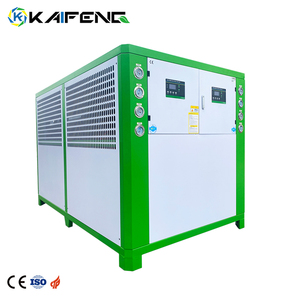



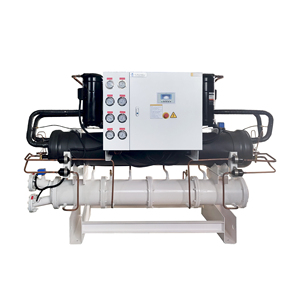




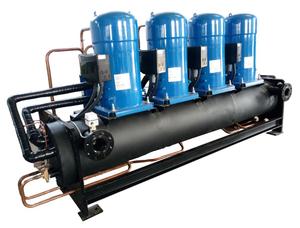






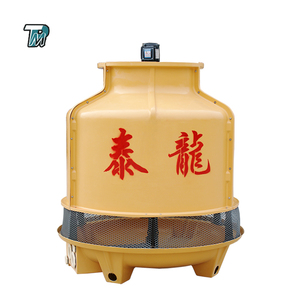

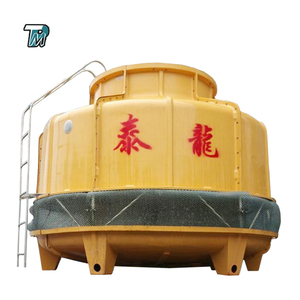
















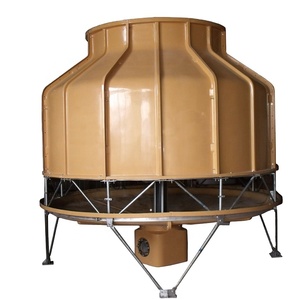


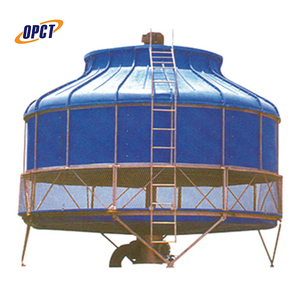
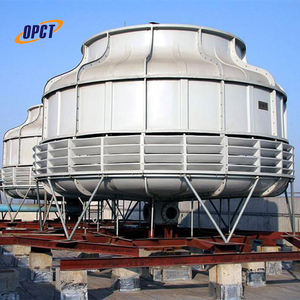


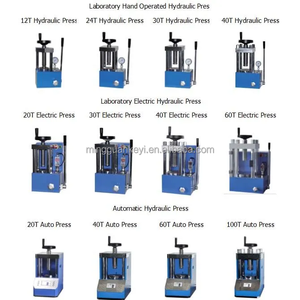






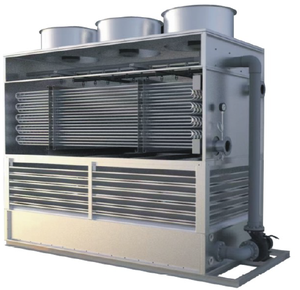

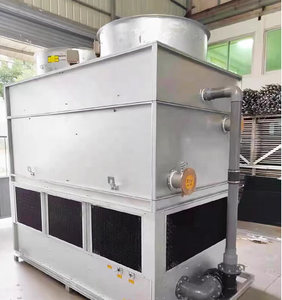
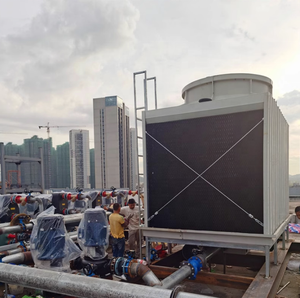




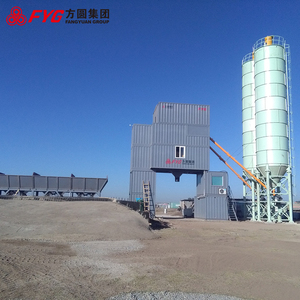



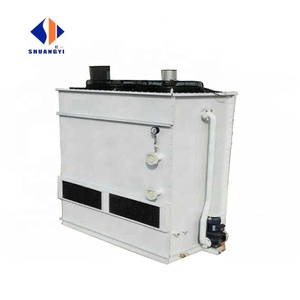







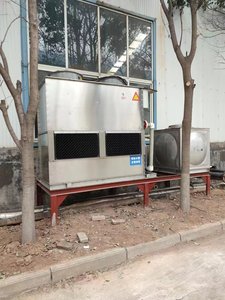


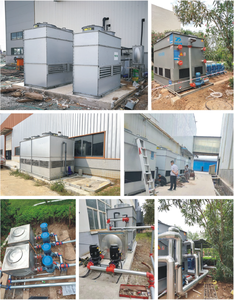

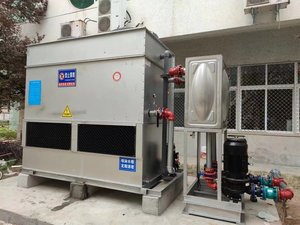

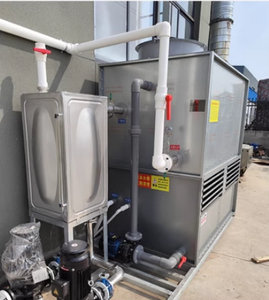




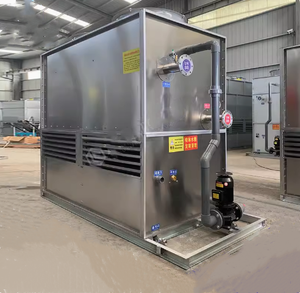




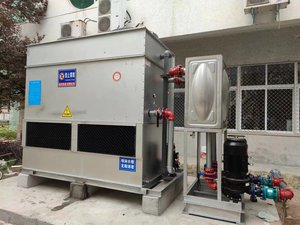







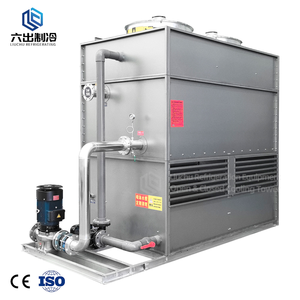









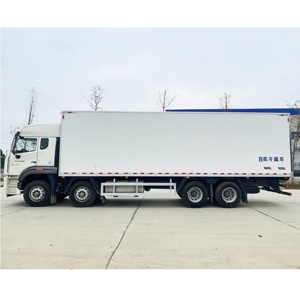


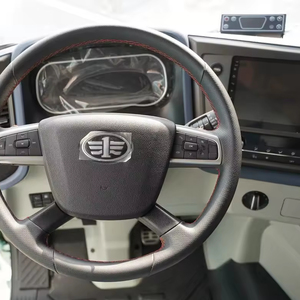
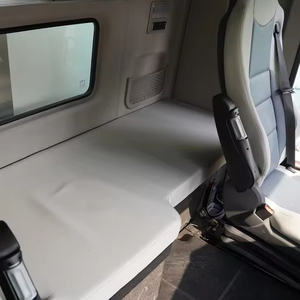

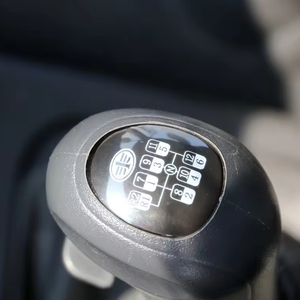
The 40t chiller is an essential machine in commercial HVAC systems. While the basic working principle remains constant, there are different types of chillers based on how they are propelled and the absorption fluids used in the system.
Centrifugal chiller
A centrifugal chiller has a large capacity refrigerant pump and uses the centrifugal force to cool the air in the surrounding environment. It is usually suitable for bigger commercial buildings that need to control temperature precisely and consistently, while also achieving higher energy efficiency. Also, a refrigeration cycle for centrifugal chillers includes compression, condensation, expansion, and evaporation.
Screw chiller
The screw chiller drives the refrigerant's flow cycle through a twin-screw compressor, which compresses the refrigerant. It provides a wide cooling range and can instantly adapt to varying load demands. What is more, screw chillers have built-in durability and functional dependability and are thus suited for commercial venues such as large office spaces, industrial plants, and schools.
Absorption chiller
The absorption chiller is a large-capacity chiller that absorbs heat through a chemical reaction between absorbent liquid and refrigerant. Absorption chillers are often driven by waste heat, steam, or hot water from industrial processes or by natural gas. They are used in large-scale commercial and industrial facilities. Also, an absorption chiller can be put right into a system that recycles waste heat; hence, it is a cooling solution with a greater environmental sustainability.
Specifications unpack a 40-ton chiller's capabilities. Key specs include the types, the refrigerants used, the range of temperatures they can withstand, their cooling capacity, measurements and weight, the horsepower, voltage, and ampere of the compressor, the air volume and pressure in the ducts, energy efficiency, control methods, and installation processes.
Generally, air-cooled chillers are more compact, ranging from 20 to 400 tons, while water-cooled chillers are larger, typically ranging from 50 to 2,000 tons. However, both types can cool the same amount of space. Mini-split chillers are also available, which are smaller and adequate for residential use. In physical measurement, 40-ton chillers usually measure about 10 feet long, 8 feet wide, and 6.5 feet tall. Weight varies depending on the make but can weigh over 5,500 kilograms (12,125 pounds).
A 40-ton chiller has a compressor with over 20 horsepower. The high horsepower allows the compressor to run smoothly and efficiently. The high school and power ensures maximum circulation of refrigerants between the evaporator and condenser to achieve optimal cooling. The compressor also draws high voltage from the power source. It typically uses over 100 volts and over 80 amperes to maintain efficient operation. The high voltage and amperage can lead to significant energy consumption, but the chiller also plays a substantial role in energy costs. Depending on the model, it can have a coefficient of performance (COP) of 4 or higher. A COP of 4 means the chiller will use one kilowatt of energy to produce four kilowatts of cooling.
Standalone chillers usually install externally in well-ventilated, roofed enclosures, while split chillers install in ceilings or on walls. Regular maintenance of 40-ton chillers is crucial to ensure optimal performance and prevent breakdowns. It usually involves inspection, replacement or repair of worn-out parts, cleaning, lubrication, and leak detection.
Some manufacturers recommend monthly maintenance, while others suggest quarterly or biannual inspections. Depending on the recommended routines, a single maintenance task can cost between $500 and $1,500. Doing routine maintenance can drastically reduce repair costs over time. It also ensures the Chiller operates efficiently, thereby reducing energy consumption.
Industrial 40t chillers are used in various industries that require temperature control for manufacturing processes, equipment, and products. Here are some common application areas for industrial chillers:
Selecting a 40t industrial chiller entails more than just going for the largest or coldest option. Here are important things to consider when choosing a 40t cooling solution:
Understand the Needs
The first step in selecting the right 40 ton chiller is to determine the exact needs. It is important to assess the current and projected cooling demand. This includes identifying critical factors influencing the cooling capacity, such as the heat loads to be removed, the desired temperature and humidity levels, the operating environment, and any future expansion plans. Additionally, businesses should evaluate their specific requirements, like energy efficiency, reliability, precision control, low noise operation, or special refrigerant needs.
Consider Chiller Types
Choose the most suitable type of 40 ton industrial chiller based on the needs. Air-cooled chillers are more common due to their simplicity and cost-effectiveness. Water-cooled options offer higher efficiency but require a central water-coaming system. Scroll chillers provide reliability and quiet operation, while screw variants are better for large cooling loads and also offer high efficiency. Process chillers can deliver a solution based on different industries and the specific needs of each facility.
Focus on Key Features
Select a chiller that offers important features. These may include modulating compressors for variable capacity, advanced controls for precise temperature control, premium filtration systems for clean coolant, redundant components for reliability, sound attenuation measures for low noise, and quick-change serviceable parts for easy maintenance. Businesses should also consider the physical attributes of the chiller, such as its size, weight, and enclosure type, to ensure proper fit, accessibility, and safety in their facility.
Control and Automation
Modern 40t chillers come with advanced controls and automation capabilities. These include centralized controls for monitoring and managing multiple chillers from a single interface, networking options for communicating with building management systems, remote access for off-site monitoring and support, and trend logging for data analysis and performance optimization. These automated features empower facility managers to efficiently oversee chiller operations, make informed decisions, and proactively maintain chiller performance.
Q: What is the process of how chillers work?
A: Generally, chillers follow the same four-step process as refrigerators: evaporate, compress, condense, and expand. First, the refrigerant in the evaporator absorbs heat from the water, causing it to evaporate and turn into gas. Then, the compressor compresses the gas, raising its temperature and pressure. Next, the gas moves to the condenser, where it releases heat to the surroundings and cools down, turning into a liquid. Finally, the liquid returns to the evaporator, and the cycle continues.
Q:What is the difference between water-cooled chillers and air-cooled chillers?
A: Water-cooled chillers use water as coolant. They transfer heat from the chiller to the water. Then, the heated water rejects heat to the atmosphere via cooling towers. Water-cooled chillers are typically more efficient than air-cooled chillers, particularly at larger capacities and under full load conditions. On the other hand, air-cooled chillers use air to dissipate heat. They contain fans that move air over condenser coils where refrigerant comes out to be warm. Then, the heat is transferred to the air.
Q: How many types of chillers are there?
A: There are different types of chillers according to different classification methods. One commonly classified way is based on the cooling source and heat transfer mechanism like water-cooled or air-cooled chillers. Another way is based on the fundamental operating principle like absorption chillers, screw chillers, centrifugal chillers, etc.
Q: Do chillers consume a lot of power?
A: It depends. The power consumption of a chiller is usually expressed as the chiller’s coefficient of performance (COP). A higher COP indicates that the chiller consumes less power. Additionally, factors like the chiller’s size, operating load, maintenance, and other factors can affect the power consumption.